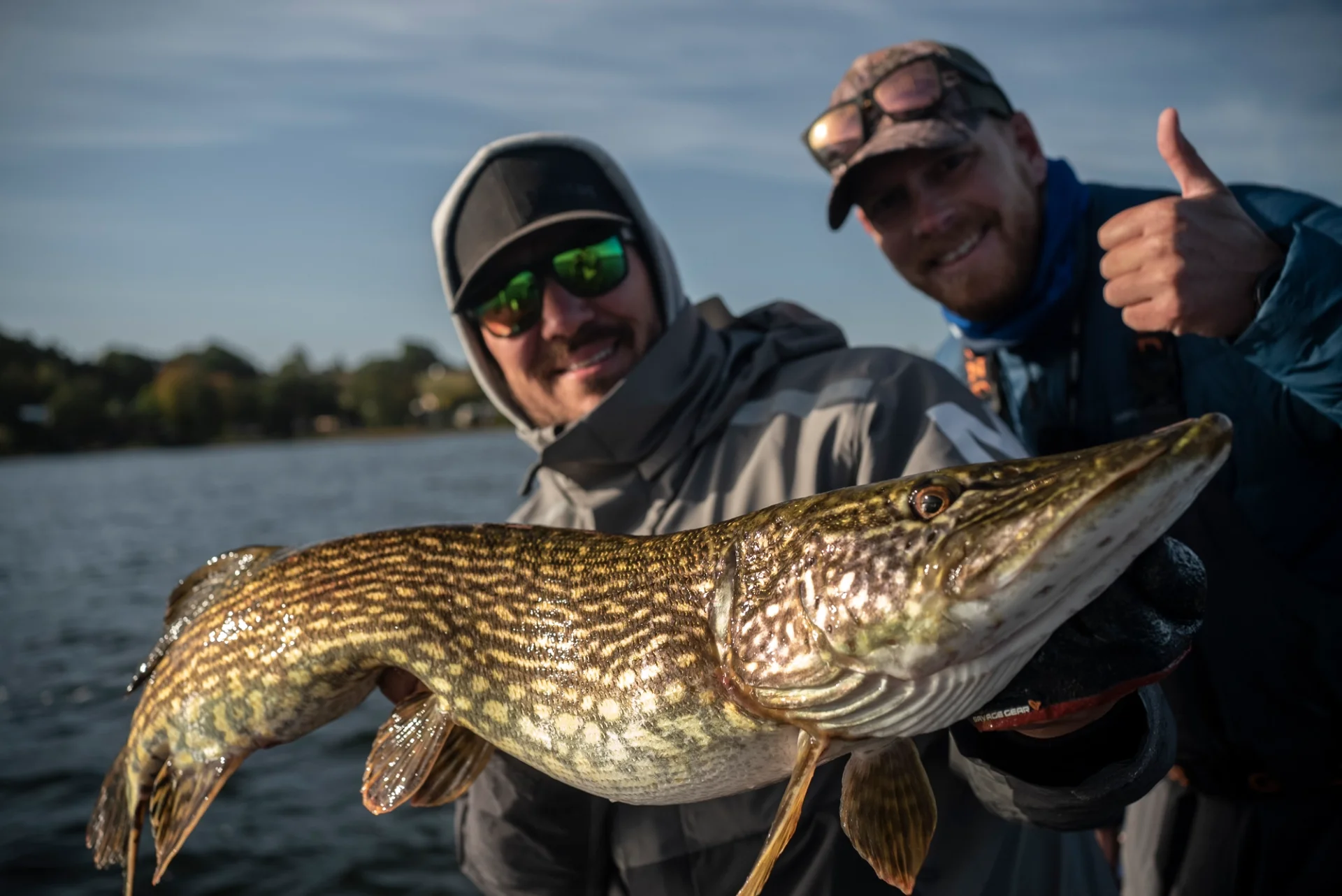LIVESCOPE PIKE HUNT

Unquestionably, forward-facing sonar has become one of the most impactful developments to hit the fishing industry. You still have to make a fish bite, but the ability to spot your quarry before your boat spooks them, watch their response to your bait and adjust accordingly defines the term “game-changing.”
Mustad pro Finn Sloth has invested countless hours into honing his skills at locating and engaging pike with his Garmin LiveScope. For him, it’s a matter of choosing quality over quantity.
“Hunting individual pike with livescope is something I have been doing for a couple of years now, and it’s super addictive,” Sloth said. “I may not always catch the numbers as I normally would on a trip, where maybe I was trolling. But I like the fact that I can pick out individual pike.
“In that way I can target only bigger fish, which I think is also great for the general population of pike. Also, I can also target the fish on spots where I normally wouldn’t."
During the winter months, Finn targets pike in waters around Holstebro, Denmark. Focusing on the forage element, he does his best work in the deeper parts of these water bodies.
“When the water cools down, the baitfish will ball up in the deep areas; and yes, pike will lurk around the big bait balls. Perfect for forward facing sonar.
“Of course, I always look for that big lake monster. They don't show up on every trip, but I like to target pike that look to be bigger than 90cm. It does depend a little on which lake I fish on the day. The average size varies a lot from lake to lake.”
Sloth often hunts pike from his Hobie kayak, but from his boat, he has greater range and control.
“In the boat I like to search with the patrol engine, but when LiveScoping a fish, I can adjust a little with the Minn Kota Ulterra trolling motor, depending on the wind,” he said. “When I search for fish, I set my LiveScope distance to 40 meters. When approaching the fish, I gradually zoom in and then try to make my cast when the fish is at 10-15 meters.
“I like to approach the pike slowly, until I am within casting distance. Then, I like to have several rods ready with different lures that have different styles of action.”
Good options for this technique include 14-18 cm paddle tails, curly tails, or V-Tail lures such as the LIVETARGET Skip Shad rigged on a Mustad Power Lock Plus Spring Keeper hook.
Other options include the LIVETARGET Juvenile Pike Swimbait , jerkbaits and crankbaits. Fitting treble hook baits with Mustad TG76 KVD Elite Trebles will greatly improve hook-up ratios.
Describing his LiveScope retrieve strategy, Sloth said this: "If the pike wants the lure, it will take it, but I generally just cast further than the fish’s position, then drop it all the way down to the fish. Never let the bait fall under the fish; just over the fish, and then just retrieve it slowly past the fish.
“If you have presented the lure close enough to the fish, then it will normally react to it, by either following and maybe striking, or rejecting the lure. If the fish do not react at all, then it's time to cast again and try to be even more precise.”
As Sloth explained, the ability to actually watch a fish react to a bait provides immediate feedback. This will tell you whether you need to speed up, slow down, add more action, or maintain the steady retrieve.
“First thing I would do is just keep retrieving slowly as a fish follows the lure, but as the fish comes closer to the boat, or kayak, then it becomes more vertical fishing, and then I'll cast again,” Sloth said. “Now, I can present the bait even slower and as the fish is just looking at the bait, I will wiggle it a little just over its head. Normally that will provoke some reaction.
“Bigger fish tend to be harder to (convince). So they may need more teasing, or you may need to present the bait from a different angle.”
